
Gujarat’s Grand Decade: 10 Destinations for Your Diary

Seasonal Change: It experiences a dramatic change in appearance with the seasons. During the monsoon, it becomes a saltwater lake, while in the dry winter months, it becomes a vast salt desert.
Wildlife: The Rann of Kutch is home to a variety of wildlife, including flamingos, wild asses, and numerous bird species.
Cultural Significance: The region has a rich cultural heritage with indigenous communities engaged in traditional crafts like embroidery and pottery.
Tourism: It’s a popular tourist destination, especially during the Rann Utsav (Rann Festival) from October to March, showcasing local culture, art, and crafts.
Religious Significance: The Somnath Temple is of great religious importance to Hindus and is considered a place of immense spiritual significance.
Location: Somnath is situated on the western coast of Gujarat, overlooking the Arabian Sea, making it a picturesque and spiritually uplifting destination.
History: The temple has a history dating back centuries and has been a symbol of resilience and faith, as it has been reconstructed and restored multiple times after being destroyed by various invaders.
Tourism: Somnath attracts a large number of tourists and pilgrims who come to visit the temple and enjoy the serene surroundings. The beautiful sea views add to the attraction of the place.
Festivals: The temple celebrates various Hindu festivals, and the most important one is Mahashivaratri, which sees a huge gathering of devotees.
History: Bhuj has a rich historical and cultural heritage. It was the capital of the princely state of Kutch before India gained independence. The city has historical landmarks, including the Aina Mahal (Palace of Mirrors) and Prag Mahal.
Earthquake: In 2001, Bhuj was severely affected by a massive earthquake that caused extensive damage to the city and the surrounding region. Reconstruction efforts have transformed the city since then.
Handicrafts: Bhuj is famous for its handicrafts and traditional arts, including intricate embroidery, block printing, and pottery. It’s a hub for artisanal craftsmanship.
Tourism: Bhuj serves as a gateway to the Rann of Kutch and is a popular starting point for travelers visiting the region. The city hosts the Rann Utsav, a cultural festival that attracts tourists from around the world.
Architectural Marvel: Rani ki Vav is known for its intricate and ornate architecture. It features a series of seven levels of steps with stunning sculptures, ornamental motifs, and panels depicting various deities, mythological themes, and divine beings.
Unique Design: The stepwell is designed in the Maru-Gurjara architectural style, characterized by its deep well, pillared pavilions, and sculpted panels. It is famous for its inverted temple-like structure, where the deeper one descends into the stepwell, the more elaborately carved and adorned it becomes.
Water Conservation: In addition to its artistic and religious importance, Rani ki Vav was designed to serve as a functional stepwell, providing water storage and relief from the hot and arid climate of the region.
UNESCO World Heritage Site: Rani ki Vav was designated as a UNESCO World Heritage Site in 2014 in recognition of its cultural and architectural significance.
Tourist Attraction: Rani ki Vav is a popular tourist destination and a testament to the architectural and artistic brilliance of ancient India. Visitors can explore its stunning galleries, admire the sculptures, and learn about its historical and cultural significance.
Deity: The temple is dedicated to Lord Krishna, who is worshipped as Dwarkadhish, meaning “Lord of Dwarka.” It is one of the Char Dham pilgrimage sites in India.
Significance: The temple holds immense religious and cultural significance for Hindus, as it is believed to be one of the seven Moksha Puri (sacred places of salvation) in Hinduism.
Rathyatra: The temple hosts an annual chariot festival, known as the Dwarka Rathyatra, where the idols of Lord Krishna and his consort, Rukmini, are placed in a chariot and pulled through the city by devotees.
Pilgrimage: Dwarkadhish Temple is a significant pilgrimage destination for devotees of Lord Krishna, and it attracts thousands of visitors and pilgrims from all over India and beyond.
Dwarka City: The temple is located in the city of Dwarka, which is associated with many legends from Hindu mythology and is considered one of the Sapta Puri (seven sacred cities) for Hindus.
Wildlife Sanctuary: The park is primarily known for being the last natural habitat of the Asiatic lion (Panthera leo persica). It is the only place in the world where this critically endangered species of lion can be found in the wild.
Biodiversity: In addition to the Asiatic lion, Sasan Gir is home to a diverse range of wildlife, including leopards, various species of deer (sambar, spotted deer, and chital), wild boars, crocodiles, and numerous bird species.
Vegetation: The park features a mix of diverse ecosystems, including deciduous forests, grasslands, and rocky hills. The landscape is characterized by dry and teak forests.
Conservation: The main objective of Sasan Gir National Park is the conservation and protection of the Asiatic lion population. Conservation efforts have been successful in increasing the lion population in recent years.
Safari: The park offers safaris, both by jeep and on foot, allowing visitors to observe the wildlife in their natural habitat. These safaris are popular among tourists and wildlife enthusiasts.
Bird Watching: Sasan Gir is also a haven for birdwatchers, with a wide variety of avian species that can be spotted within the park.
Tourist Attractions: Apart from wildlife, the region has historical and cultural attractions, such as ancient temples and tribal villages.
Best Time to Visit: The park is open to visitors from October to June, with the peak tourist season from December to April.
Historical Significance: The park is known for its historical and architectural significance. It preserves the remnants of a once-thriving 15th-century city, including fortifications, mosques, temples, tombs, and other structures.
Pavagadh Hill: At the core of the site is Pavagadh Hill, an ancient volcanic formation that has been of religious and cultural importance for centuries. The hill features a temple dedicated to the goddess Mahakali and attracts pilgrims and tourists.
Blend of Architectural Styles: The site exhibits a unique blend of Islamic and Hindu architectural styles, reflecting the cultural and artistic exchanges that occurred during the period when it was built.
UNESCO Recognition: Champaner-Pavagadh Archaeological Park was designated as a UNESCO World Heritage Site in 2004 for its historical, architectural, and cultural significance.
Visitor Attraction: The site is a popular tourist destination and offers a glimpse into the rich history and artistry of the region. Visitors can explore the well-preserved structures, enjoy scenic views from Pavagadh Hill, and experience the religious and cultural significance of the site.
Accessibility: The site is easily accessible from Vadodara and makes for a fascinating day trip for those interested in history, archaeology, and architecture.
Historical Significance: Vadodara has a rich historical heritage and is known for its association with the Gaekwad dynasty. The city was the capital of the former princely state of Baroda, ruled by the Gaekwads, and played a significant role in the history of Gujarat.
Cultural Hub: Vadodara is a cultural center with a strong tradition of art, music, and dance. It is known for its vibrant cultural events, including classical music festivals, art exhibitions, and dance performances.
Educational Hub: The city is home to several prominent educational institutions, including the Maharaja Sayajirao University of Baroda, which is known for its academic excellence.
Landmarks: Vadodara boasts several architectural and historical landmarks, such as the Lakshmi Vilas Palace, the Maharaja Fateh Singh Museum, Kirti Mandir, and Sayaji Garden.
Industries: Vadodara is an industrial city and an economic hub of Gujarat. It is known for its chemical and pharmaceutical industries, making it an important industrial center in the state.
Transport: The city is well-connected by road, rail, and air. Vadodara’s railway station is one of the busiest in India, and it also has an airport with domestic and limited international connectivity.
Festivals: The city celebrates various festivals with great enthusiasm, including Navratri, Diwali, and the Vadodara International Kite Festival.
Historical Significance: It is one of the oldest cities in India, with a rich historical and cultural heritage. It was founded in the 15th century by Sultan Ahmed Shah.
Economic Hub: Ahmedabad is an important economic and industrial center in India. It is known for its textile and garment industry, as well as being a hub for various businesses and industries.
Educational Institutions: The city is home to prestigious educational institutions, including the Indian Institute of Management Ahmedabad (IIMA) and the National Institute of Design (NID).
Landmarks: Ahmedabad boasts numerous historical and architectural landmarks, including the Sabarmati Ashram, Jama Masjid, and the Sidi Saiyyed Mosque, famous for its intricate stone latticework.
Festivals: It is known for celebrating festivals with great enthusiasm, including Navratri, where traditional Garba and Dandiya dances are performed.
Gandhi’s Connection: Ahmedabad has a significant connection to Mahatma Gandhi, who established his Sabarmati Ashram on the banks of the Sabarmati River, which is now a museum dedicated to his life and teachings.
Cultural Diversity: The city is a melting pot of cultures and traditions, with a diverse population and a rich culinary scene.
Urban Development: Ahmedabad has seen significant urban development and infrastructure improvements in recent years, making it one of the most rapidly growing cities in India.
Historical Significance: Junagadh has a rich history and was once the capital of the Junagadh State, a princely state that existed before India’s independence. The city is known for its historical monuments, including the Uparkot Fort and the Jama Masjid.
Cultural Heritage: The city is known for its diverse culture and heritage, with a mix of Hindu and Islamic influences. The city’s cultural richness is reflected in its festivals, cuisine, and architecture.
Gir Forest National Park: Junagadh is the gateway to the Gir Forest National Park, which is the last natural habitat of the Asiatic lion. Tourists visit Junagadh to explore the wildlife and nature in this region.
Tourist Attractions: In addition to the Gir Forest, Junagadh is home to several other attractions, including the Mahabat Maqbara, a magnificent mausoleum, and the Girnar Hill, which is a significant pilgrimage site for Jains and Hindus.
Agriculture: The region around Junagadh is known for its agricultural activities, including the cultivation of crops like groundnuts, cotton, and mangoes.


![Best Places to Visit in India [ Discovering the Rich Tapestry of India]](https://mtechhive.com/wp-content/uploads/2024/01/happy-caucasian-pretty-long-hair-elegant-tourist-woman-dress-with-red-suitcase-outside-hotel-425x283.jpg)
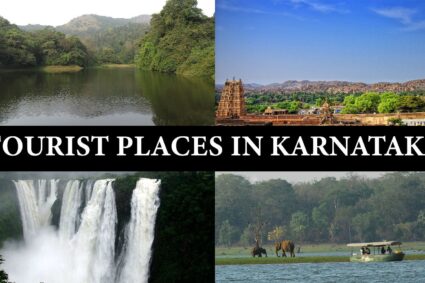


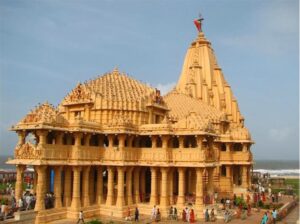
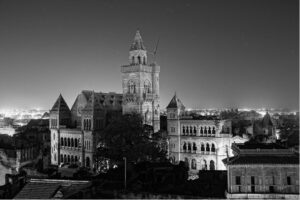
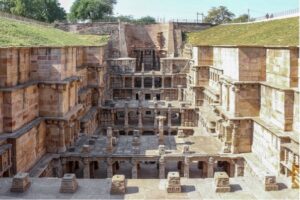
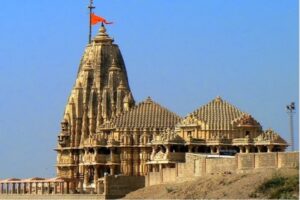


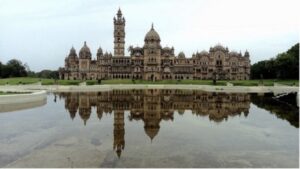
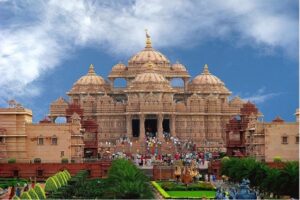
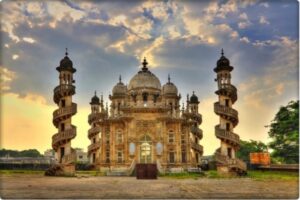
Average Rating